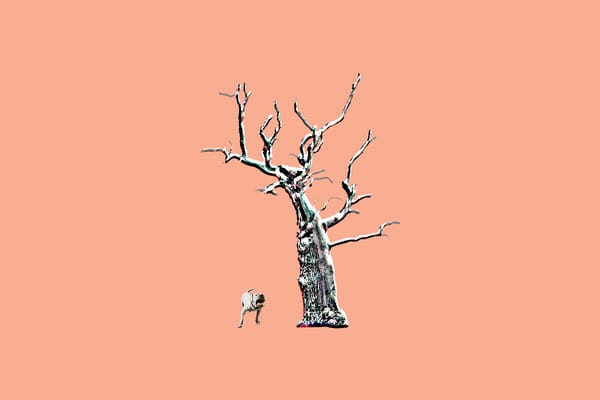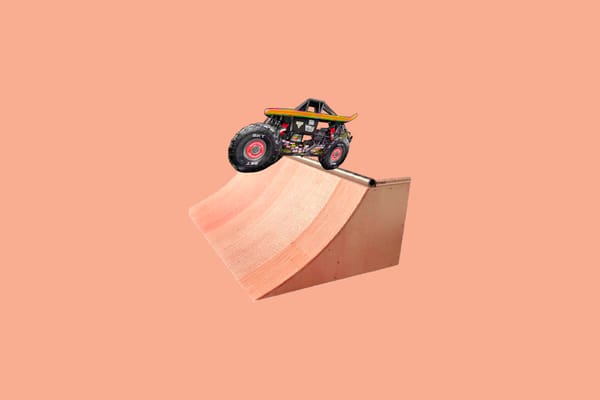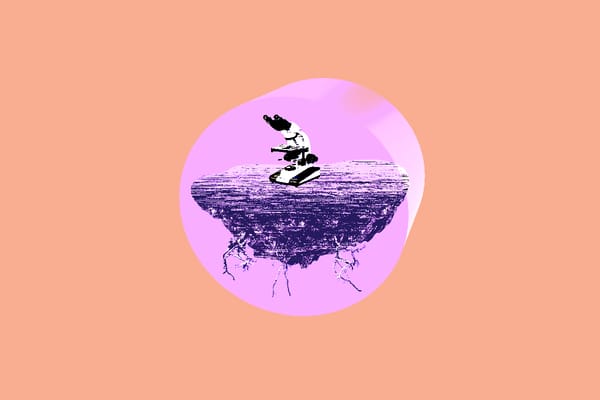SSOTY (Skateboarding Stories of The Year) 2022
An incomplete collection of the year's best writing.
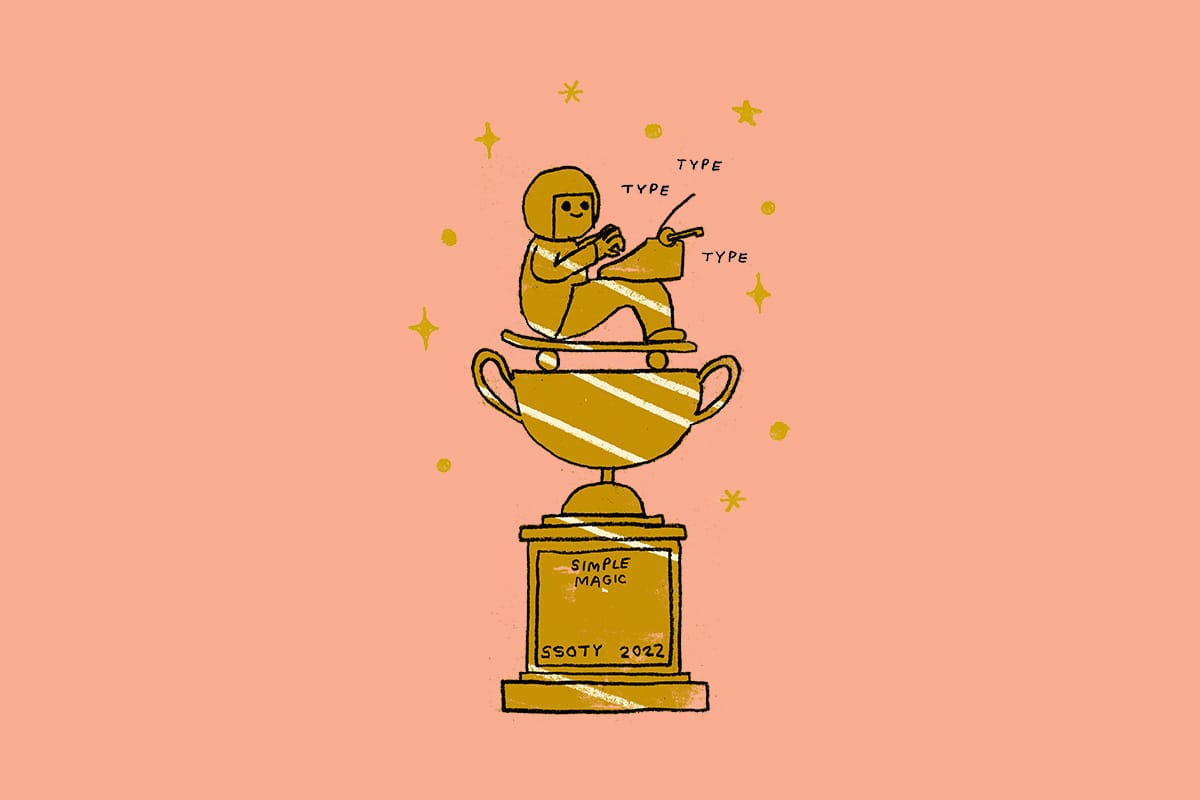
Time is a fleeting, mercurial thing. By the time I’d settled on that hackneyed opening line, 15 minutes had passed. Cruel. And now, as if that indignity wasn’t enough, it’s nearly 2023. How’d that happen? Well, in the usual Gregorian calendar way. But with each day of 2022 full of strange new horrors with the occasional sprinkle of hope and joy, the year flew by. Which has made it hard to keep track of everything that happened, especially when it comes to skateboarding’s hurried little corner of the world.
How many videos and video parts “drop” a day? Five? Nine? 3,208? We’ll never know for sure, but by year’s end, we’ll have watched just a fraction of them. The same goes for skateboard writing. The writing that is done about or is related to skateboarding. Skournalism—whatever you call it, there’s so much great work being published that most of us haven’t read, and if all were right in the world, we’d have the opportunity to. Instead, by the time January creeps close, we’ve all been so preoccupied with enjoying or ignoring SOTY drama that we completely forget about SSOTY—the Skateboarding Stories of The Year.
Consider the following list an effort to catalogue and celebrate some of 2022’s best work. To give a little love to the writers compelled to write about this stuff because of their love—our shared love—for skateboarding. Which is the least we can do because god knows we ain’t making a living doing this (… until Skate Grantland gets off the ground?). Also, if your piece is on this list, you’ve won SSOTY. Congratulations. Send me a message and I will mail you a print of your respective Hiller Goodspeed illustrated trophy. (Seriously.)

“Leo Baker interview”
Kristin Ebeling, Mess Skate Mag, Issue 1 (January 2022)
I only feel like now, in my life, as I’ve come out as trans and I’m really just being who I am, I’ve gotten in touch with my core self, which I feel like I lost touch with around age 13, when I was really feeding into this machine of what it means to be a successful skater. Because being a pro skater was always my dream. And so I did the things that I was told that I had to do to get to where I am now. But it just really sucks that I had to compromise and sacrifice so much of myself to get those things, and that people didn’t just see value in who I was as a person when I was a kid.
“Joe Buffalo: A First Nations Legend Speaks”
Stepan Soroka, Thrasher Magazine (January 21, 2022)
How do you feel about the current state of Indigenous skateboarding?
I feel like it is at an all-time high because of the popularity of skateboarding right now. Back when I started, Indigenous/First Nations skaters were few and far between and I didn’t even know a scene existed anywhere else. One exception was Sam Devlin who had a part in Trilogy. Back in the day you could get your ass kicked just for having a skateboard anywhere you went. You were labeled an outcast. Now everyone and their dog skateboards, and I’ll bet that it is only going to continue to grow from here.
“The Tao of Wee Man”
Caity Weaver, The New York Times Magazine (January 24, 2022)
Acuña enjoys being a cog in the perpetual motion machine of skateboard society because he is implacably antsy. He gets anxious, he said, if he does not launch himself into an activity after waking. The occasions when he must rest to recover from injuries (from skateboarding — or “Jackass”) torment him. To Acuña, waking hours constitute the period in which he must tire himself out before bedtime. He careers through the day like Animal the Muppet through a Dr. Teeth and the Electric Mayhem drum solo.
“Honoring the Lineage of Black Skateboarders with Black Skateboarders”
Al Brown, Al’s Skate House (February 14, 2022)
In the first mag I had, Clyde Singleton had a photo feature of a fakie front crook that I’ll never forget. The only giveaway was a hand, but that was enough.
“More Joy and Less Cool”
José Vadi, The Yale Review (March 1, 2022)
This dynamic relationship with public space speaks to what skaters always own: the knowledge that unless you fully submit to the act of skateboarding itself, you will never truly understand the culture—let alone the cockiness and confidence acquired when falling becomes an option, however controllable, scabs on elbows like encrusted merit badges, earned by trying to learn something new. This new thing is often something that seemed unachievable mere days earlier—an idea that is transformed into a physical, accomplished act. When landing a trick after hours of trying, you feel not so much a celebration but an exhalation, a release of relief. The skill and humility involved in learning to skate create a velvet rope between skater and civilian that lies glamorously across schoolyards, back alleys, and downtown ledges, daring and welcoming anyone to enter.
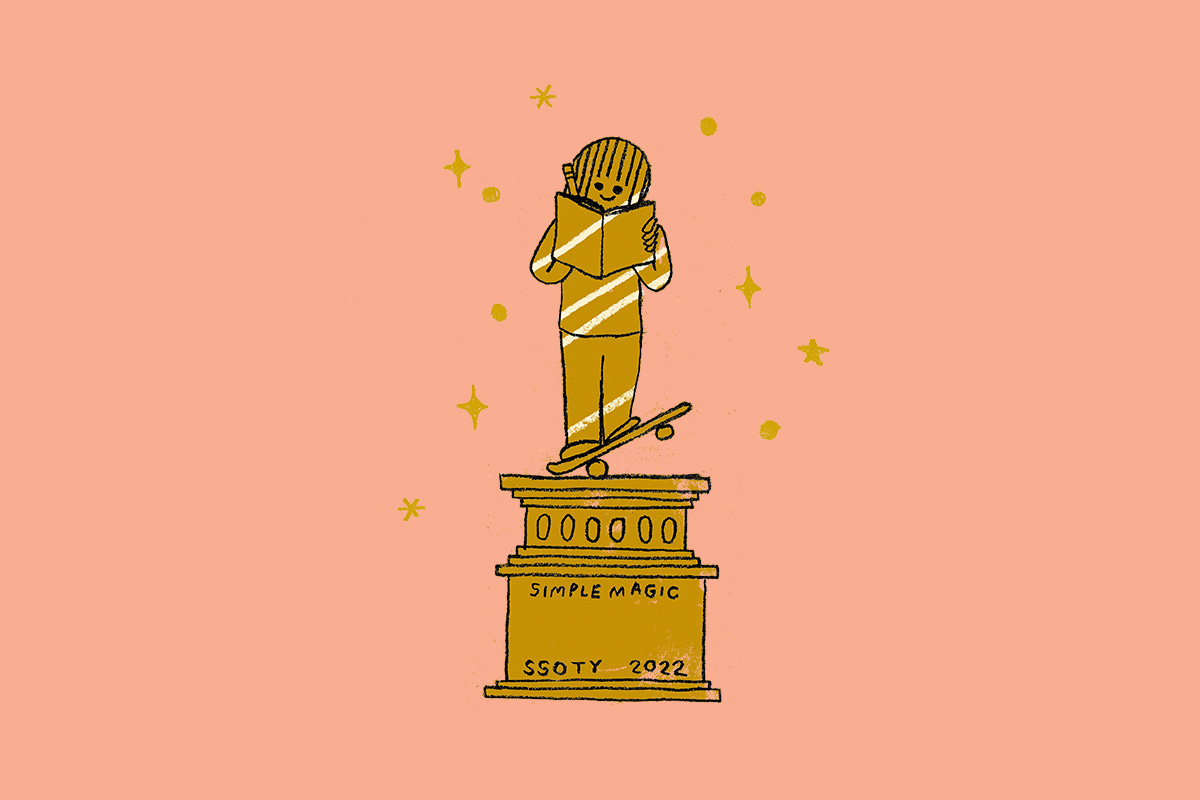
“‘Through The Fog’ – Eloise Dörr’s take on DP/DR disorder”
Skateism (March 30, 2022)
When I discovered skateboarding it gave purpose to the day and some drive, to even just have something to do and to have a goal-oriented activity was life changing in those early days. My symptoms being of the dissociative nature it was also so important for me to have an activity where I had to be present in myself. I found it hard to dissociate from reality if I was falling on concrete [laughs]. 10 years has passed since those early days and my life looks a lot different now (in a great way!) but skateboarding still holds that same purpose for me in many ways!
“Imagining a Sustainable Skateboard”
Christian Kerr, Village Psychic (April 17, 2022)
Skateboarders are naturally inclined to make the most out of a bleak situation, and the rest of the world seems to take cues from our culture about what’s cool. What if we turned our dogged creativity towards the intractable issue of addressing the causes of climate change? Maybe skaters could serve as a model for everyone else moving forward. Let’s break down the skateboard part by part to see what alternatives are out there, and then let’s imagine some more sustainable possibilities we could push towards.
“Behold a Great Flying Man”
Kyle Beachy, Southwest Review (May 17, 2022)
The first words we hear in Tony Hawk: Until The Wheels Fall Off, directed by Sam Jones, are “Ahawahhhhhhh. Faaahhhhhk. Aaaahhhgh.” The film doesn’t tell us, but it’s June 27, 2016, seventeen years to the day since Tony Hawk landed the first 900 in the history of skateboarding, and he is at his private vert ramp trying a 900. Why attempt such a thing at age 48? For one, because he believes he can. For two and maybe three, because, as he says, “I’m willing to struggle . . . just to figure out how to do it. I never want to back down from a challenge.” This is determination, which is premised on reaching a specific outcome, and also will, a more general drive toward a generally desired end. If you’ve never seen it, I imagine watching Tony Hawk eating shit and screaming into the air will come as a shock. We watch him spin, fall, suffer, then struggle for air as he climbs the ladder back to the deck to do it all again.
“The OG skate scholar | an interview with Becky Beal”
Sara Riordan, Yeah Girl (May 19, 2022)
So why even study skateboarding? What’s the point?
[Laughs] Well… I don’t know if there is one. I think for me, politically thinking through how people practice democracy is really important. Of course, it has its own politics, but the fact that it’s participant-driven – people make up the rules, make up the games, all that kind of stuff – I think that is one of the most important skillsets anybody can learn: how to create their own social spaces and to think about democratic places. And now skateboarding, and a lot of other lifestyle sports or alternative sports, or whatever people wanna call them, is central to what a lot of what people in pedagogy are doing about authentic learning. And so when it comes to this concept about how people learn — people do it on their own and they learn more authentically than if I tell them “you need to do this”. So now there’s a bunch of research on self-paced and self-directed learning and how skateboarding is a prime example of that.
“‘A Canvas For the Psyche’ — The Politics of Griptape in Skateboarding”
Frozen in Carbonite, Quartersnacks (June 8, 2022)
Back in the eighties, my brother and I were both skating, and in those days everybody was gluing sandpaper down or shit like that. We were already making some anti-slip tape, so we started tweaking the tape we were making in our factory and sampling friends and people in the industry. They were like “Man, this shit’s better than anything else out there.”
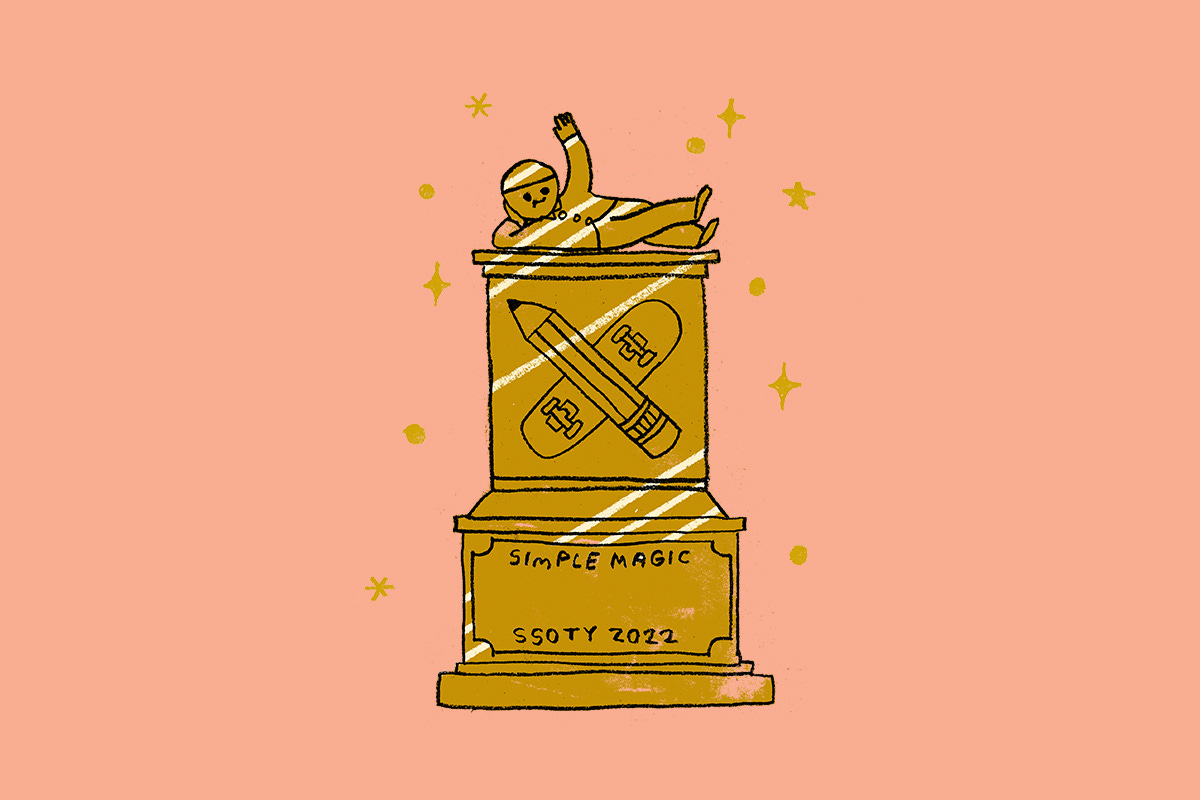
“Civic Center — A Profile of the L.E.S. Skatepark at Ten Years”
Ian Browning, Quartersnacks (August 10, 2022)
“Tell me how someone shits on a wall?” Nestor, who works for the New York City Department of Parks and Recreation, says to me between bites of a ham-egg-and-cheese on a roll. The first Parks employee at Coleman Playground is supposed to unlock the bathrooms upon arrival, but the men’s room is out of service. Nestor is the second person from Parks to show up — a lawnmower driver is sitting in the bleachers by Market Street, waiting for a lawnmower to be dropped off — and there is a piece of paper that reads “Bathrooms OOS” taped to the door of the bathroom. Nestor dances around what’s actually wrong in there, but the situation is severe enough that a second Parks employee reiterates that it is closed before I can say a word to him.
“An Analysis of the Video Descriptions on Thrasher” +
“Thrasher Caption Generator”
Pete Glover & Barry Wilson, 4PLY Magazine (August 30 + September 1, 2022)
Describing the contents of a skate video in a compelling way is not easy. With very few exceptions, every skate video is pretty much the same. Aside from calling out spots, stunts, sponsors, and skaters, there isn’t too much left to talk about. And there are only so many synonyms for "gnarly" and "smooth" available.
Yet the constant churn on new content requires a virtually bottomless need for fresh text to accompany it. Whether to entice a viewer’s interest with a topic sentence, give a little added context, or just keep the homepage looking consistent, every video out there has some sort of caption. And assuming these video descriptions aren’t auto-generated (but how cool would it be if if they were), we at 4Ply wanted to salute the brave copywriters who put it down, day after day, the only way we know how: with a statistical analysis.
“chrome ball interview #158: rick mccrank”
Eric Swisher, The Chrome Ball Incident (September 13, 2022)
I think that was something Jeremy and Heath had maybe come up with? I’m not really sure. I just remember riding in Jeremy’s Lexus on our way to a spot, it was nighttime, and they start telling me about this idea they had for a skit in the video. We were all going to be in it together and I was going to be “The Waster”, that I would just waste everything. Like, I take one bite of a candy bar and throw it out of the car window. Stuff like that. Just being super wasteful.
I had to tell them no. I don’t litter, I’m not going to do that. And I just remember Jeremy giving me one of those long “Okayyyyyy”s with the question mark-kinda deals. (laughs)
“The Best Thing in Skateboarding Right Now Is This Old Green Bench”
Andrew Murrell, Vice (September 15, 2022)
“Skateboarding needs lore and myths,” Bergenfield said. “We love that shit. We obsess over the details, all the bullshit we love. This is just another silly story [that] kinda got blown out of proportion. We don’t do stuff like this in skateboarding that often, and the real story is about AVE—how his hard work endowed this bench with meaning and now everyone wants to see if they can crooked grind it.”
“Kevin ‘Spanky’ Long - Character Witness”
Farran Golding, Closer Skateboarding Magazine Vol. 1 Issue #2 (Summer 2022)
To make time to draw is a pretty weird thing. It’s not how I’ve ever worked and sometimes it can be a little challenging. Like, “Okay, I’ve got a series coming up. I need to sit down and draw.” But you figure out ways to organize it. When I do feel inspired, I write it down, and I recognize when I’m [in] a place of “conceptualization,” to use a term [that’s] a little too much for what’s actually happening…
“Okay, I want to draw a hotdog laying in a hammock.”
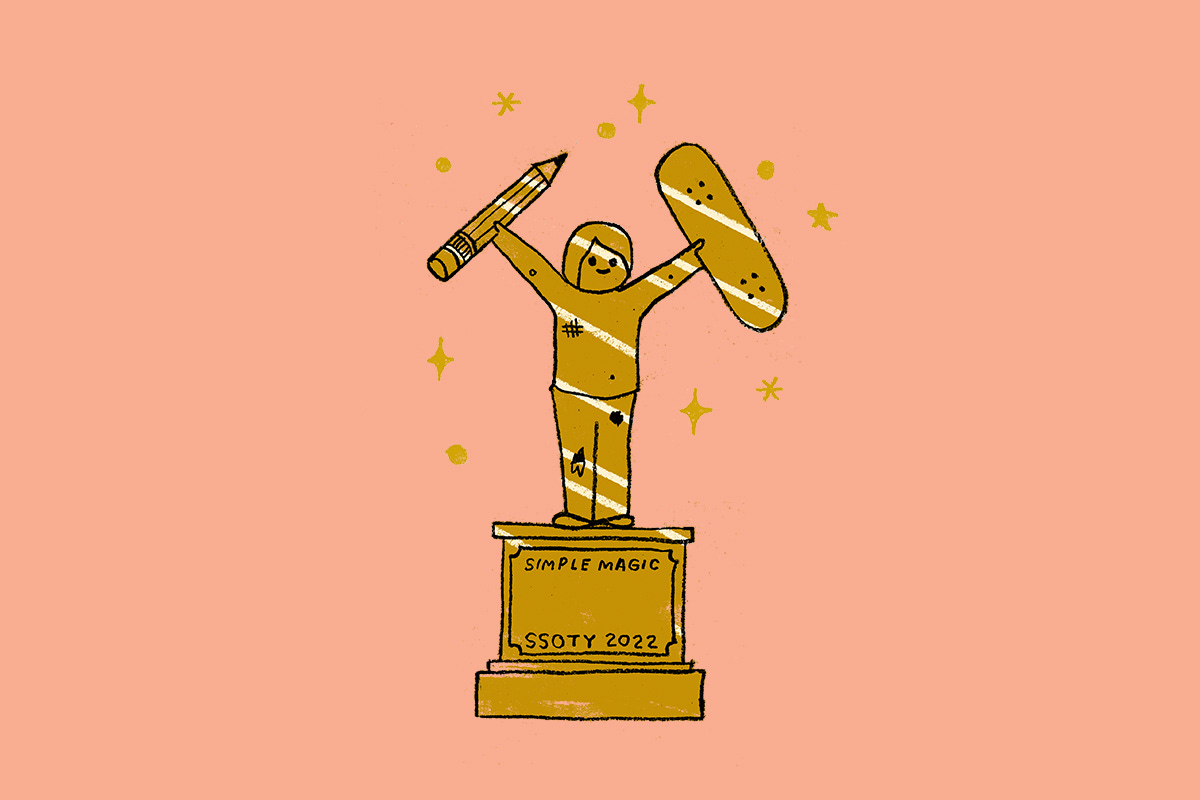
“My Parents Are Hackers Out of Necessity”
Jeremy Klemin, The New York Times (September 25, 2022)
I remember the wooden handrail partly because it deviated from the standard circular metal bars. It’s possible that it met accessibility standards set out in the Americans With Disabilities Act of 1990, but even so, it was impractical for my mom. Accessibility is partly about meeting architectural code, but it involves so much more: individuals, their changing bodies, and multiple ways to get from here to there.
I also remember the handrail because I thought it might be the first one I’d grind on my skateboard. I would perform a jump, an “ollie,” and the bottom of my board would lock onto the rail, at which point I’d slide down and land safely on the concrete below. It was clearly doable: As I trailed my mom up the stairs, I saw the vibrant, technicolor streaks on the rail that indicated someone else had already tried.
“Dime Piece”
Sam Korman, Village Psychic (October 10, 2022)
Contest, nontest, mock Olympics—the Dime Glory Challenge does not fall easily into a single category. It resembles a WWE wrestling event more than anything, and even that’s not quite right. Framed as a series of challenges, the event satirizes institutional attempts to frame skateboarding as a sport. The Speed Challenge shirks style points, and clocks flatground tricks with a speedometer. The Rainbow Challenge, which stacks a series of arch-shaped rails to higher and longer proportions, seems more like a track and field event. And the Art Show Challenge parodied a self-serious art auction. Of course, this year would once again name the World Champion of Skate, mounting a grudge match between Alexis Sablone and Breanna Geering. And finally, there was the Volcano Challenge, the DGC’s flame throwing, foam spitting, finale.
“An Interview With The Kid Who Films Skating On His Laptop”
Larry Lanza, Jenkem (October 11, 2022)
Not gonna hold you, Gonz did it first. Mad people were like “Who the fuck is this kid? He’s just ripping off Gonz,” but Gonz isn’t doing it how I’m doing it. He didn’t steal his laptop from his school. Just joking, I love him. He’s already done basically everything, so it doesn’t even matter. He’s basically Soulja Boy.
“The oral history of Hollywood High 16”
Sam Muller, Los Angeles Times (November 22, 2022)
Jamie Thomas: You know, one of my favorite tricks, though, was Chris Haslam’s kickflip back Smith on the 12. And he flips right into the rail at the top. And it’s the most beautiful back Smith after kickflipping in. I just remembered being totally shocked at how good he did that. It was phenomenal. He did it so, so, so good. It’s probably the one of the best kickflip Smiths ever done. I remember staring at it for an excessive amount of time and being totally blown away.
“Skateboarding in the Anthropocene: Grey spaces of polluted leisure”
Paul O’Connor + Clifton Evers + Brian Glenney + Indigo Willing, Leisure Studies (December 9, 2022)
Greyness is at the core of skateboarding as outdoor urban leisure. For example, contemporary skateboarding both resists a dominant neoliberal paradigm and paradoxically bolsters it. Belinda Wheaton (2013) argues that skateboarding, like other lifestyle sports, involves high levels of consumption and attendant identity expression. Skateboarders wear down their timber boards and polyurethane wheels constantly and unsustainably replenish these by purchasing branded equipment that signifies subcultural capital (Thornton, 1995), all the while casting aside their waste. Fashion brands of skateboarding have become multibillion dollar businesses where profit growth trumps any consideration of environmental cost. However, skateboarders are not unambiguously turbo-consumers. Many skateboarders pursue thrift and sustainability, reusing and sharing resources among the community. As Iain Borden (2019) argues, while other youth may occupy the city to shop at the local mall, some skateboarders challenge the use of the city for consumption alone. Instead, they skate the built environment for non-consumptive ludic purposes.


